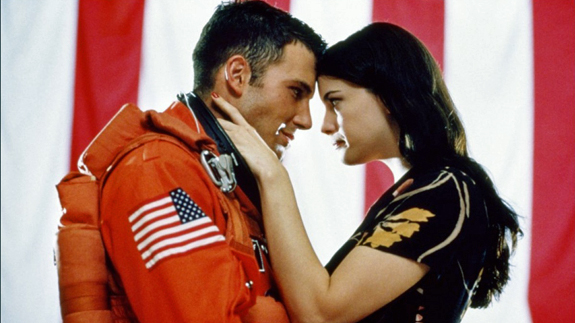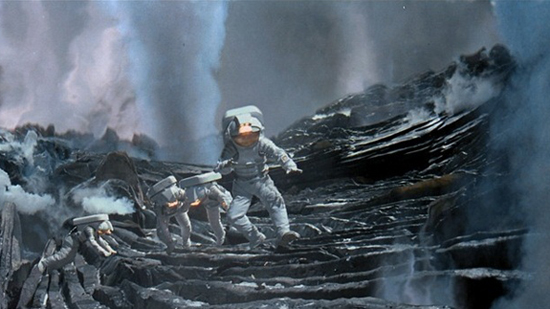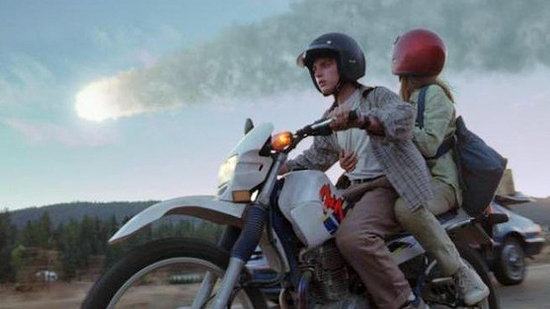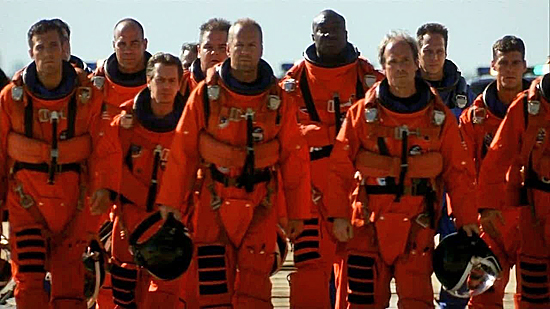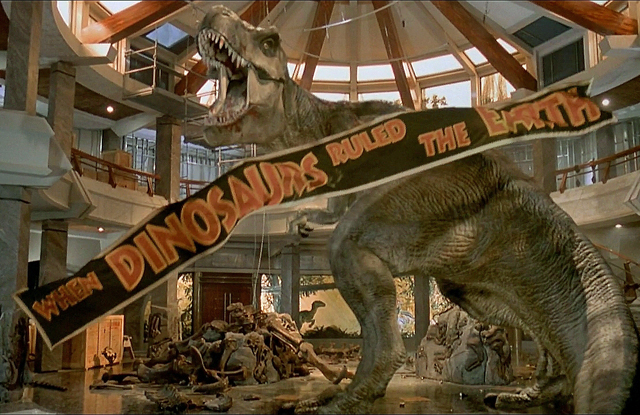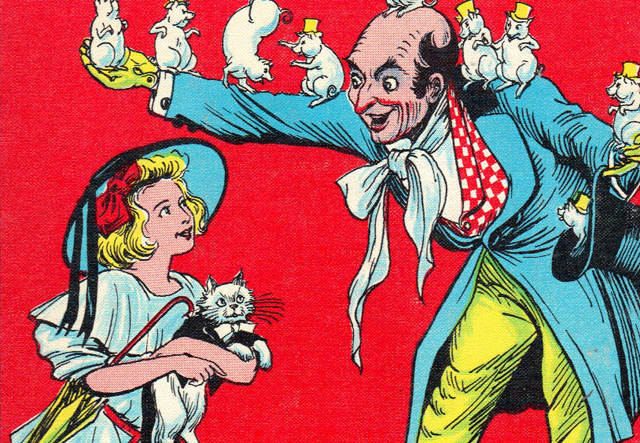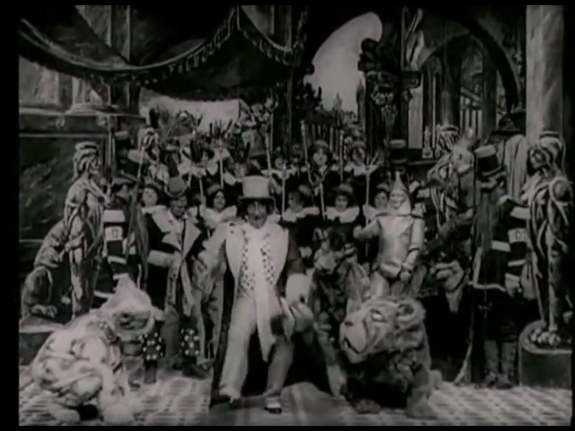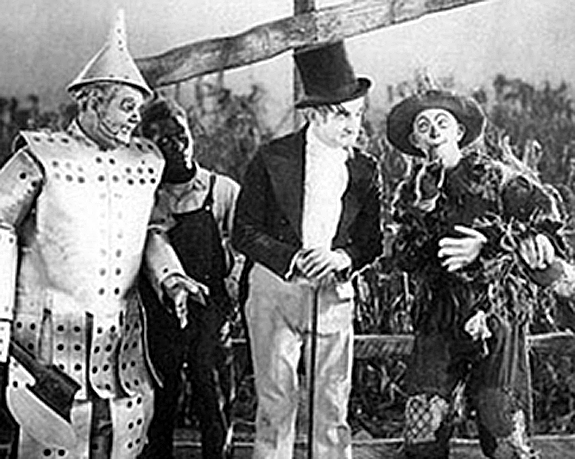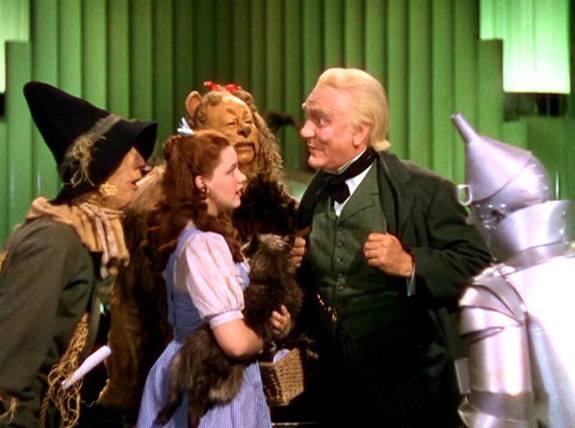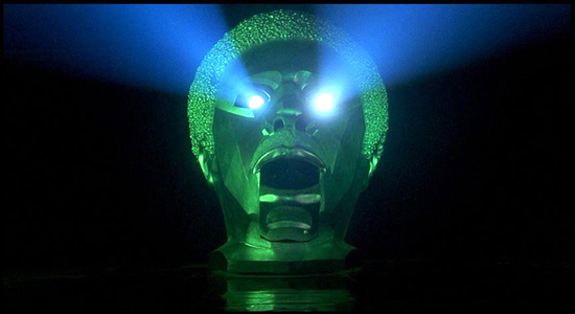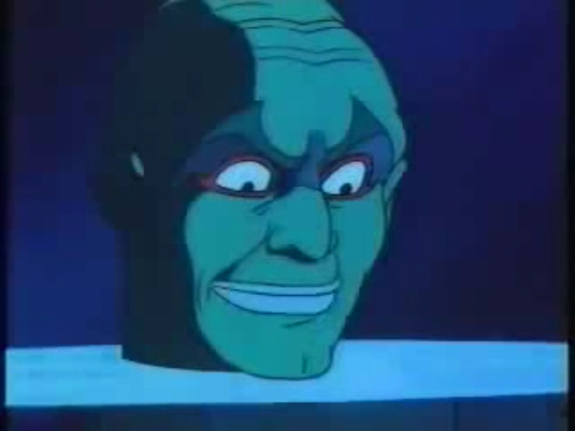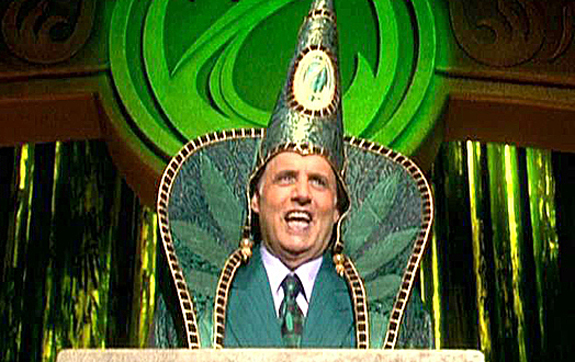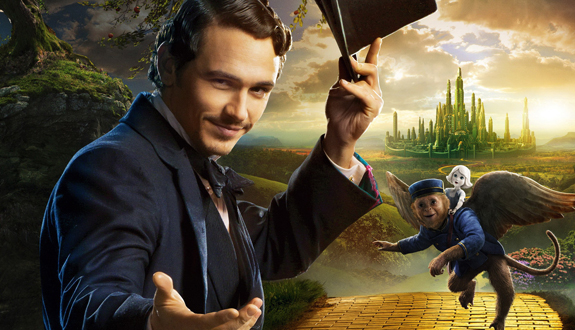Hollywood is in the not so enviable position of having to fill every week of the year with big, new and expensive movies. Not all of them are going to be great, but usually the big studios can ride upon the success of one huge hit to help with the financing of all the others. Usually, these kinds of movies are the tentpoles of each movie season and they are the ones that movie companies place all their resources into. It’s no wonder why huge action films get more publicity and exposure than the small indie flicks released along side them as a result. But, in order for the tentpoles to do well each and every year, they must be able to connect with what the audiences are in the mood for, which can change unexpectedly. Unfortunately for Hollywood, it means that they must rely heavily on fresh new ideas for films, something that they sadly don’t have all the time. When ideas are sparse in the industry, filmmakers then resort to playing it safe, relying on the tried and true genre flicks. Now, this strategy works well sometimes, but resorting to old genre standbys sometimes results in making movies that are less original, and more like every other film out there. And sometimes, Hollywood will even run the risk of not only having an idea that’s already been done, but is also being done at the same time by someone else. Thus we get what is commonly known as the “copycat” pictures, where two different studios will have competing movies in development with almost the exact same premise. Sometimes there will be a space in between their releases, but there are other times when both movies end up in direct competition with each other, which is what happened in 1998 with the big summer disaster movies Armageddon and Deep Impact.
The releases of Armageddon and Deep Impact came out at an interesting time because it was at a point of ferocious contention between two different studios. Deep Impact was released by the newly formed Dreamworks Pictures, a joint venture created by filmmaker Steven Spielberg, music publisher David Geffen, and exiled animation producer Jeffrey Katzenberg. Katzenberg only years prior had been unceremoniously let go by the Walt Disney Company, then under the leadership of Michael Eisner, and part of the formation of Dreamworks came as a direct response to the very public feud between the two studio heads. Some of that resulting tension manifested itself over the next few years as each studio tried to top each other with their upcoming projects. After the success of Toy Story (1995), Dreamworks soon put into production their own gritty toys coming to life movie called Small Soldiers (1998), directed by Joe Dante. After Pixar announced their next film would be A Bug’s Life (1998), Dreamworks quickly announced their own film to launch their animation wing called Antz (1998). To answer this, after Dreamworks announced their new disaster tentpole, Deep Impact, Disney owned Touchstone Pictures announced that they would have their own doomsday action flick, Armageddon. For these few years, both Disney and Dreamworks were trading serious blows, and the releases of these two movies represented one of the most contentious battles in the war. Coming out of battle of egos like this, it’s interesting to see how the two movies measure up against one another, which is what I’m going to look at with this article, and see if there were any winners in this cinematic war, or just all losers.
“I’m leaving on a Jet Plane.”
First of all, it should be stated that neither film is any good. They’re both perfect examples of the dumb action tentpole that Hollywood was fond of in the late 90’s, when CGI opened up the possibilities of the medium. When the style trumps the substance of the picture, all that you’re left with to the define each movie is the premise, and for both of these movies, it is almost exactly the same story. A giant celestial object is heading for a collision with the Earth, capable of wiping out all life on the planet. The fate of mankind rests on the success of risky manned space missions, aimed at intercepting the objects and destroying them with nuclear bombs before time runs out. That’s pretty much the plot of both movies right there in a nutshell. Sure, there are subplots throughout, but does anybody really remember them, or care? All people remember from Deep Impact and Armageddon is the scenes where parts of the earth are nearly destroyed by these massive objects (a comet in Impact, and an asteroid in Armageddon). But, are any of these films less bad then the other. The most interesting comparison made about them is that they are flawed, but in very different ways, particularly from a film-making standpoint. Deep Impact’s main flaw is that it takes itself way too seriously, which comes across as ridiculous once the film tries to portray this over the top premise realistically. Armageddon on the other hand is more playful with the premise, but is way more excessive; which is no surprise given who made it. Some of these flaws are definitely attributable to the demands put on them by the studios, but certainly the decisions made by the filmmakers also contribute to the big differences between the movies.
That’s the thing that has favored Armageddon now 17 years later. It has the distinction of being one of the earliest movies from the King of Excess, Michael Bay. Bay up until that point had made a name for himself as a highly regarded and stylish commercial director, which he then transitioned into a career as an action filmmaker. He found success with his first movie Bad Boys (1995), and even more with what I would consider his best movie to date, The Rock (1996). Coming off back to back hits, Touchstone and Disney trusted him with this huge production and the result was a movie that indeed catapulted Bay’s status as a filmmaker, but also began his decline as a quality storyteller. Honestly, you can pinpoint the origins to all the problems with Michael Bay’s style from this movie. The lack of restraint, the excessive running times, the macho bravado of his characters, and his just hyper-kinetic and distracting editing style. By contrast, Deep Impact is much more subdued, under the direction of Mimi Leder, but that’s also not such a good thing. Mimi Leder was, and continues to be, an accomplished television director, but her career as a big screen filmmaker unfortunately was short-lived, thanks in no small part to the lukewarm response to this movie. It was a cool move on Dreamworks part to entrust a big budget production to a female director, something which hadn’t happened before in Hollywood up until then, but Leder’s inexperience unfortunately sinks the production in the end. Leder doesn’t have a distinctive style, so the look of Deep Impact is very plain and uninspired. For all the awful, excessive choices made by Bay in his film, like the pointless strip club scene or the way too long space station rendezvous, at least they leave an impact on the viewer. Deep Impact is sadly the more forgettable of the two.
“Well, look on the bright side. We’ll all have high schools named after us.”
If there is one thing that does work in Deep Impact‘s favor, it would actually be how it uses it’s story. By taking the more subtle approach, the movie does help to audience garner more sympathy for the characters. Not only that, but it chooses to place less emphasis on the mission itself, helping to make the scenes where the astronauts make contact with the comet all the more interesting. Armageddon makes the space mission almost 70% of the movie’s running time, which after a while can become grating on an audience as Michael Bay doesn’t give us any time to rest between the big action sequences. Now, that’s fine for a movie to do if it’s paced well enough, but Armageddon is over 2 1/2 hours long, and by the end of that audiences are exhausted with the sensory overload that the movie presents. Deep Impact is more of a slow build, which can be boring at times, but it makes the big action set pieces more worth it in the end. The landing on the comet is an especially impressive sequence, and is made all the more impressive today after the recent landing of the Rosetta space probe, which sent back pictures of a terrain not unlike the one seen in the movie. Deep Impact also tells a bigger story, showing the lives of many characters both on the ground and in outer space, and does so within a nice compact 2 hour run time. Unfortunately, most of the subplots of in Deep Impact are really boring, but the variety is what helps to make it a more enriching story-line compared to Armageddon’s relentless action.
“Look, we’ve got front row tickets to the end of the Earth.”
Another distinctive difference between the two movies would also be the cast. Dreamworks clearly wanted Deep Impact to be a special event movie and that’s represented by the stellar, all star line-up of actors they assembled. It’s actually quite impressive when you look at all the names on the cast list; Robert Duvall, Elijah Wood, James Cromwell, Jon Favreau, Morgan Freeman, and even unlikely participants like Maximillain Schell and Vanessa Redgrave. With a cast like that, it’s a shame that they are wasted with such a bland script. Armageddon on the other hand, you could say, is filled with all the usual suspects. Action main stay Bruce Willis seems like the natural choice for the lead, and he’s backed up by many notable character actors like Will Patton, Peter Stormare, and William Fichtner. Sure, there are some award winning actors thrown into the mix, like Steve Buscemi and Billy Bob Thornton, but everyone is operating at pretty much the same low level in this movie, which is to say that no one is giving a damn in their performance. Now, that can be a plus as it gives some of the more eccentric actors like Buscemi some room to improvise, but otherwise it leads to stilted performances from the other less talented actors. Chief among the worst performances in the movie are the two actors in the love story; Ben Affleck and Liv Tyler. This was at a time long before Argo and Gone Girl would elevate Affleck’s acting chops, and his performance here is absolutely laughable. Couple that with zero chemistry with Tyler, and you’ve got the makings of one of the worst romantic subplots in action movie history. By contrast, even though Deep Impact‘s characters are boring, at least the actors try their best to make the performances resonate. Hell, that whole cliche of having the President of the United States be African-American in these disaster movies stems from Morgan Freeman’s stand out performance here. They may be working with nothing, but at least they do the work.
But, what does elevate Armageddon beyond it’s rival, and has kept it fresh in people’s minds since it’s release is in it’s visual effects. Both Armageddon and Deep Impact portray global destruction on an ambitious scale. Unfortunately for Impact, it has become a victim of it’s own adherence to a more realistic style. Both movies were made in the early days of CGI in film-making, at a time when the industry was still trying to feel out all the different avenues that they could go. Movies like Twister and Independence Day (both 1996) showed that you could indeed make mass destruction look real on film, and just a year prior, James Cameron’s Titanic (1997) showed that CGI could even put the audience right in the middle of the chaos seamlessly. But, at the same time, what looked cutting edge in the late 90’s unfortunately can seem dated today, especially if it’s presented unmasked without a distinctive style. Such is the case with Deep Impact. Though the comet surface scene does hold up, thanks to the help of hand crafted sets, the actual destruction scene at the end is painfully dated. The exploding comet and ensuing tidal wave have an unfortunate cartoonish look when seen today, which spoils some of it’s impact it has (no pun intended). In a way, that’s why Armageddon is helped by the excess of Michael Bay. His very eccentric style helps to mask the dated CGI and make it less distracting. Really, it’s everything else in the movie that proves distracting, and the visual effects are just impressive enough to make the action scenes work. I actually like how the asteroid itself is not realistic by any means, and is almost alien in design, with it’s jagged and dark green terrain, making it a much more interesting setting. It’s not the most impressive CGI ever done, but Armageddon looks less dated thanks to it’s director’s distinctive style, which has changed little over the years, for good and bad. Deep Impact unfortunately is now relegated to being a product of it’s time purely by it’s own limitations.
“The waters receded. Cities fall, but they are rebuilt. And heroes die, but they are remembered.”
When the movies are as deeply flawed as these two, it’s hard to see how any can be considered better than the other. If I were to choose between the two, I would give the slight edge to Armageddon, just because it sticks more distinctly in my mind, even though it’s mostly because of just how notorious it is. Deep Impact, despite a capable cast and noble intentions, just falls flat by comparison, not leaving a single impression on me in these last 17 years. Even after re-watching it, I’m still struggling to remember exactly what happened in the plot. I think the only reason both of these movies continue to be talked about in the same breath today is because of the once contentious rivalry between two studios. Things have changed dramatically since then. Eisner left Disney in the mid 2000’s and the studio no longer competes heavily with Dreamworks Pictures. In fact, Dreamworks had it’s own schism a few years back when Jeffrey Katzenberg split his animation wing off from it’s parent company and made it independent. The remaining Spielberg and Geffen wings of Dreamworks ironically teamed up with Disney after this and are now partnering with Touchstone, the distributor that they were once in direct competition with. For these two movies, it represents probably the most extreme case of two competing “copycat” films in the marketplace and are probably more distinctive as being weapons in this little skirmish rather than as stand out films on their own. Still, they weren’t the first time Hollywood placed two like-minded films into competition, nor were they the last. But, even though the fight is interesting to observe, it’s clear that the battle was a losing one for both ends.
“Get off…the nuclear…warhead…NOW!!”

